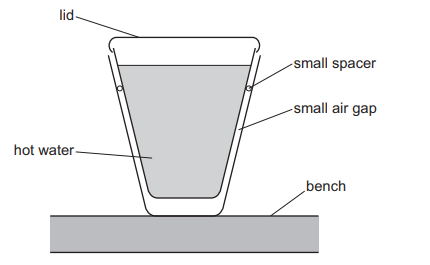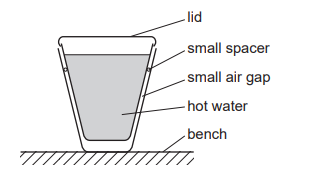Question
A tank contains water. Ripples are produced on the surface of the water. Refraction is observed.
What causes the ripples to refract?
- The cold water in the tank is replaced by warm water.
- The ripples change speed as they move from deep to shallow water.
- The ripples hit the wall of the tank.
- The ripples pass through a narrow gap.
Answer/Explanation
Ans:B
Question
A boy jumps into an indoor swimming pool. He notices that the water appears to get colder as he goes deeper underwater. This is due to convection.
Which statement is correct?
Cold water is more dense than warm water so it sinks to the bottom of the pool.
Warm water is more dense than cold water so it rises to the surface of the pool.
The molecules in cold water have more kinetic energy than the molecules in warm water so they move to the bottom of the pool faster.
The molecules in warm water are closer together than the molecules in cold water so they rise to the surface of the pool.
Answer/Explanation
Ans: A
Question
Two plastic cups are placed one inside the other. A small spacer keeps the two cups separated.
Hot water is poured into the inner cup and a lid is put on top, as shown.

Which statement is correct?
A. The bench is heated by convection from the bottom of the outer cup.
B. The lid reduces the energy lost by convection.
C. There is no thermal conduction through the sides of either cup.
D. Thermal radiation is prevented by the small air gap.
Answer/Explanation
Ans: B
Question
Two plastic cups are placed one inside the other. Hot water is poured into the inner cup and a lid
is put on top, as shown.

Which statement is correct?
A. Heat loss by radiation is prevented by the small air gap.
B. No heat passes through the sides of either cup.
C. The bench is heated by convection from the bottom of the outer cup.
D. The lid is used to reduce heat loss by convection.
Answer/Explanation
Ans: D
